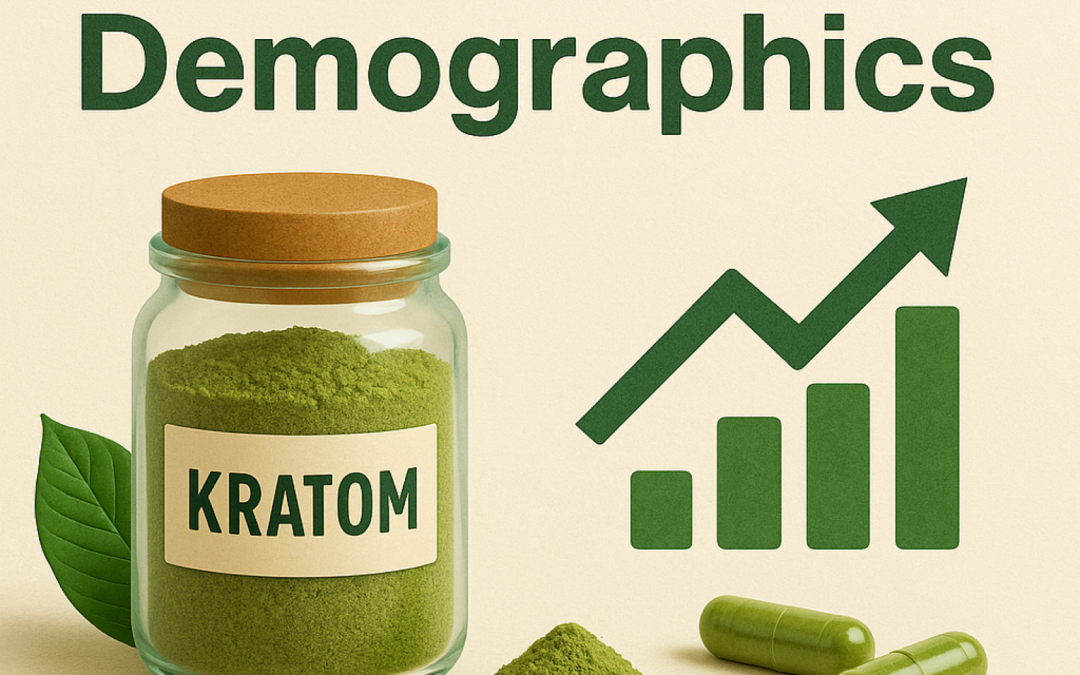The Rising Popularity of Kratom in the United States
Kratom (Mitragyna speciosa) isn’t just another plant — it’s a centuries-old secret that’s rewriting the wellness playbook in America. With its unique blend of uplifting and soothing effects, kratom has captured the imagination of health seekers everywhere. Curious about who’s behind this surge? In this article, we’ll take a closer look at kratom demographics — who’s using kratom and why.
Key Points
-
Approximately 1.7 million Americans aged 12 and older used kratom in 2021.
-
Kratom demographics – users are predominantly White (90%), with a mean age of 40, and a higher proportion of females (61%).
-
Primary reasons for kratom use include pain relief (91%), anxiety (67%), and depression (65%).
-
Kratom is also used for energy enhancement and as an aid for opioid withdrawal.
Prevalence of Kratom Use
According to the Substance Abuse and Mental Health Services Administration’s National Survey on Drug Use and Health, an estimated 1.7 million Americans aged 12 and older used kratom in 2021 . Other estimates suggest that the number of kratom users in the U.S. ranges from 2 million to 15 million.
Demographics of Kratom Users
A survey involving 2,798 kratom users revealed the following demographic patterns:
-
Race: Predominantly White (90%).
-
Gender: Majority female (61%).
-
Age: Mean age of 40 years.
-
Location: Primarily based in the U.S. (97%).
Another study indicated that most lifetime kratom users were male (61.2%) and between the ages of 18 and 34 (55.2%).
Reasons for Kratom Use
Kratom is utilized for various purposes, with users reporting the following primary reasons:
-
Pain Relief: 91% of users.
-
Anxiety: 67% of users.
-
Depression: 65% of users.
Additionally, kratom is employed for energy enhancement and as a self-treatment for opioid withdrawal symptoms.
Usage Patterns
The majority of kratom users consume it orally, with 49% taking doses of 1–3 grams. Daily kratom use is common, reported by 59% of users.
Frequently Asked Questions (FAQ)
Q: Is kratom legal in the United States?
A: Kratom is legal at the federal level in the U.S., but some states and municipalities have enacted bans or regulations. It’s essential to check local laws before purchasing or using kratom.
Q: Can kratom help with opioid withdrawal?
A: Some individuals use kratom to alleviate opioid withdrawal symptoms. However, clinical studies on its efficacy and safety for this purpose are limited, and medical guidance is recommended.
Q: What are the potential risks of kratom use?
A: While many users report benefits, kratom can have side effects, including nausea, dizziness, and dependency. High doses or combining kratom with other substances can increase risks.
Q: How is kratom consumed?
A: Kratom is commonly consumed as a tea, in capsules, or as a powder mixed with liquids. Dosages vary, and effects can differ based on the amount and method of consumption.
Q: Is kratom addictive?
A: Kratom has the potential for dependence and withdrawal symptoms, especially with prolonged use. Users should approach it with caution and consult healthcare professionals if concerns arise.


